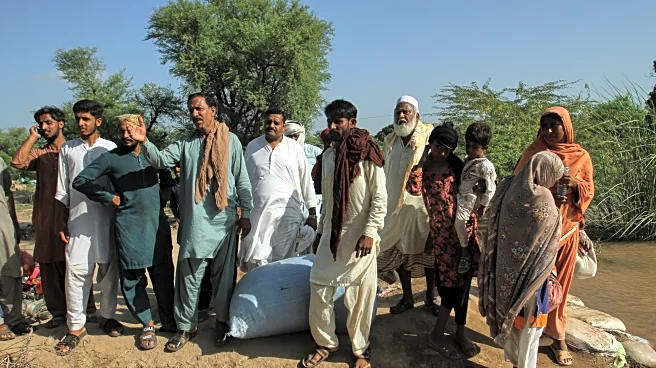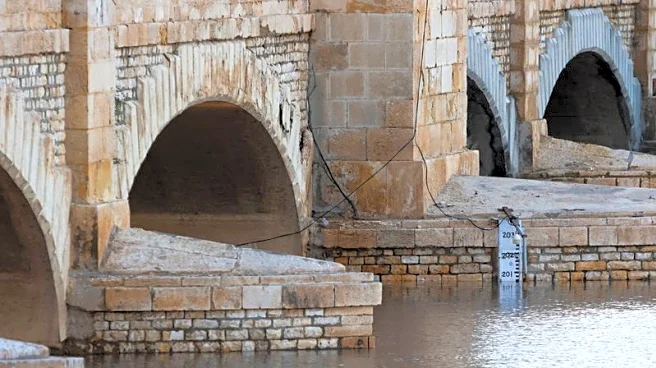What's Happening?
In Pakistan's eastern Punjab province, floodwaters have significantly receded, allowing displaced families to begin returning home. The monsoon deluges had displaced over 2.5 million people and killed about 100. The Punjab Disaster Management Authority reports that water levels in major rivers have returned to normal, and rescue operations are ongoing. The floods were exacerbated by water releases from overflowing dams in India, which swelled rivers in Punjab. The National Disaster Management Authority has directed returning residents to follow local instructions for assistance.
Why It's Important?
The receding floodwaters in Punjab mark a critical phase in the recovery process for affected communities. The ability of displaced families to return home is a positive development, but the challenges of rebuilding homes and livelihoods remain significant. The situation highlights the importance of effective disaster management and international cooperation in mitigating the impact of natural disasters. The coordination between India and Pakistan in sharing flood alerts is crucial for preventing future catastrophes. The ongoing relief efforts underscore the need for sustainable infrastructure and preparedness to withstand the effects of climate change.
What's Next?
As floodwaters move south toward Sindh province, authorities must continue monitoring and managing the situation to prevent further displacement and damage. The focus will be on rebuilding infrastructure and providing support to affected communities. The experience in Punjab may prompt discussions on improving cross-border water management and disaster preparedness. Stakeholders, including government agencies and international organizations, will need to collaborate on long-term strategies to enhance resilience against future flooding events.












